Climate Consequences and Solutions
What are governments, business and individuals doing to prevent a climate catastrophe?
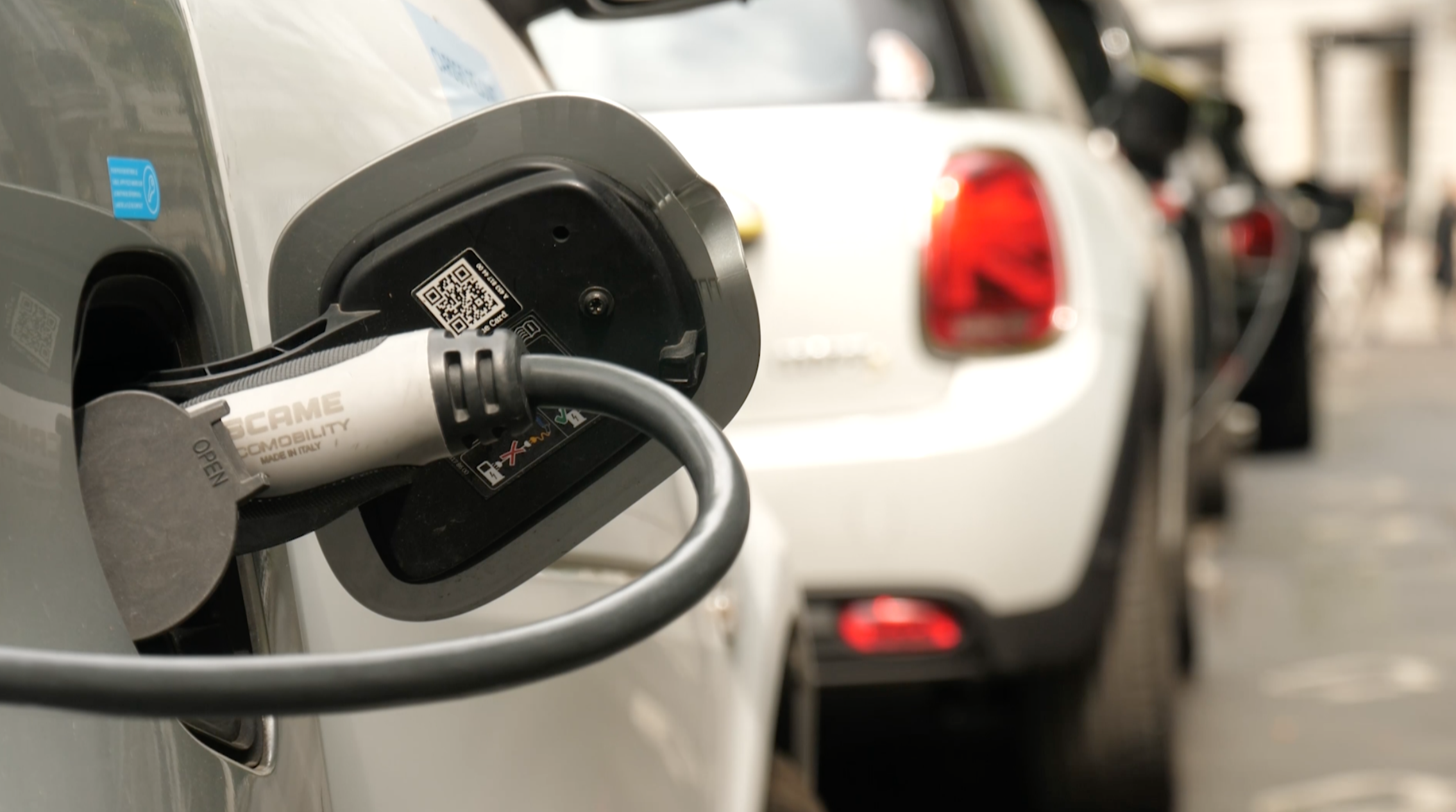
Can I afford to be green?
By Elizabeth Mearns
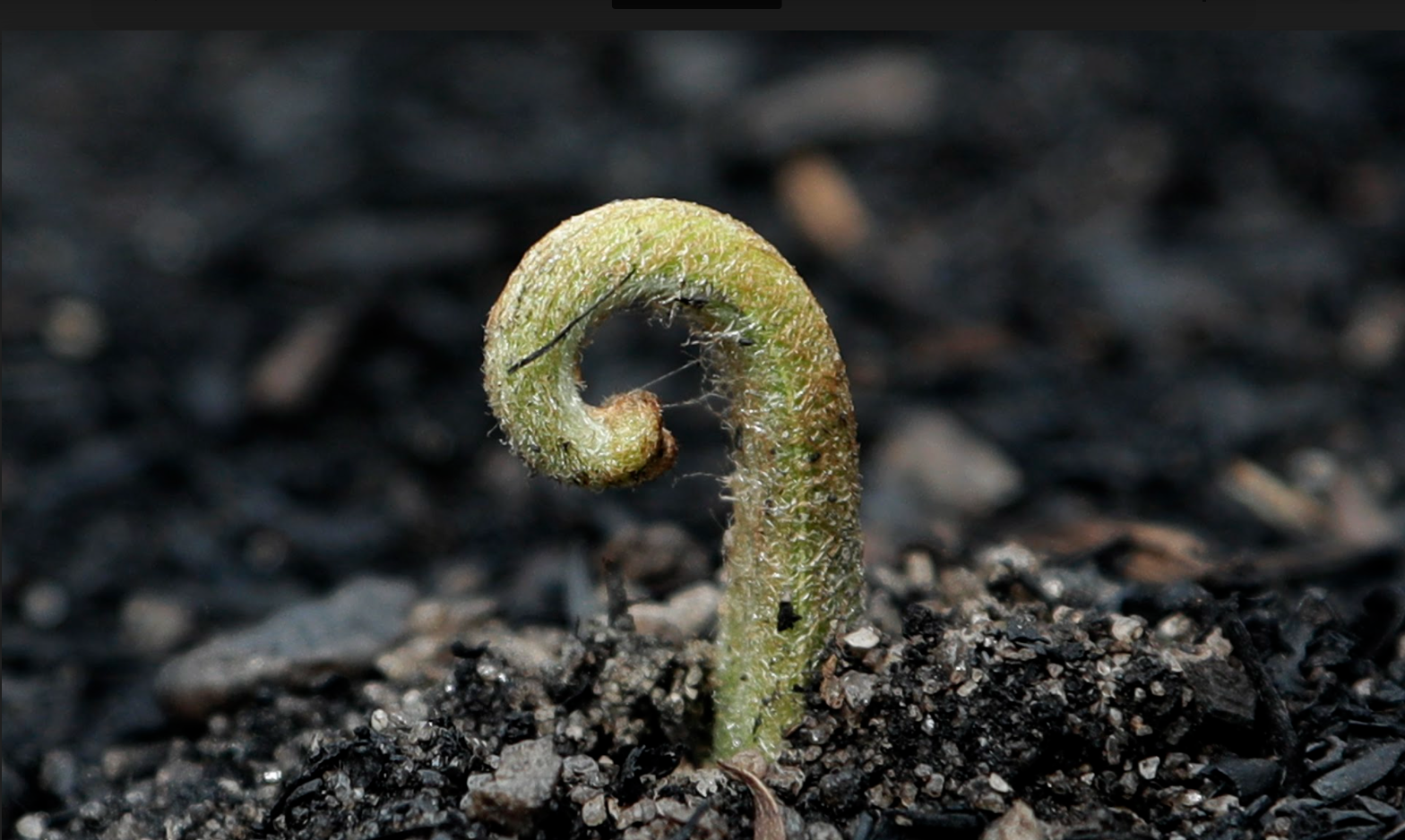
Heat pumps, hydrogen boilers and electric vehicles are just some of the new products that we are being advised to buy or install to protect the planet and curb climate change.
At first glance these look very expensive, so how much do we really need to spend to go green?
Of course, there are many ways we can help the environment which are free or even save us money:
– Eating less meat reduces greenhouse gas emissions
– Cutting down on food waste saves money at the till, and reduces the methane produced by scraps thrown away in landfill
– Turning down the heating by 1 degree Celsus reduces the average household energy bill by 1 percent and cuts emissions
– And buying second-hand clothes instead of new ones is good for the pocket as well as the planet.
Green driving
But there are some items that will cost. Cars for example.
After 2035 it will be impossible to buy a new petrol or diesel car in the European Union. All new cars will need to be Electric Vehicles (EVs). In 2020, only one in nine cars bought in the EU were powered by electricity, so this will be a massive investment by car owners across Europe. On average EVs cost between 10 and 20 percent more than the equivalent petrol or diesel model.
The EVs at the top of the market are also more expensive to insure, because they are more powerful, as well as being more expensive. In some cases, this can be as much as 45 percent more on the cost of insurance every year.
So what about fuel?
At present, there are not enough EV fueling points, so the EU has also proposed legislation that would require countries to install public charging points no more than 60 kilometers apart on major roads by 2025. In some EU countries, it is possible to charge your electric vehicle free of charge at supermarkets and businesses, albeit often only if you are a customer.
If you have off-road parking, you can charge your car at home, but if you plug it into a regular wall socket a car battery would take at least 35 hours to charge. To do this more quickly, you need to install a wall-box charger, which typically costs about $1,000.
For a medium-sized car covering an average yearly mileage of 14,500 kilometers, the electricity would cost about $700 every year, which is about half the cost of an average petrol car on the same mileage.
Heating in the home
And it isn't just our cars that will be affected.
The International Energy Agency says that fossil fuel boilers should not be sold after 2025 if the world is to achieve net-zero emissions by the middle of the century.
There has been a lot of publicity about boilers fueled by hydrogen, and some companies are working hard to develop these. But they are not on sale yet and they are not the only answer. Hydrogen supply is limited and it won't be possible to heat most European homes in this way.
The most likely means of heating your home in the future will be an electric heat pump. They work like a fridge in reverse, taking heat from the air and making it warmer using a compressor.
At the moment, they are expensive. Heat pumps on average cost about $12,000 to buy, but as more are sold it is likely they will become cheaper.
Solar panels might be the answer for some homes, particularly in Southern Europe. A 4kW solar panel system will cost about $8,000 to install. It will last for about 25 years and produce about 3,400 kWh per year – which is the average amount a family uses.
Making these changes in every home in Europe that currently uses gas or oil to heat their homes is a massive challenge. It is expected to create new jobs and provide a boost to the economy. But there's no doubt that saving the planet is going to cost every citizen in Europe a lot more in the future.
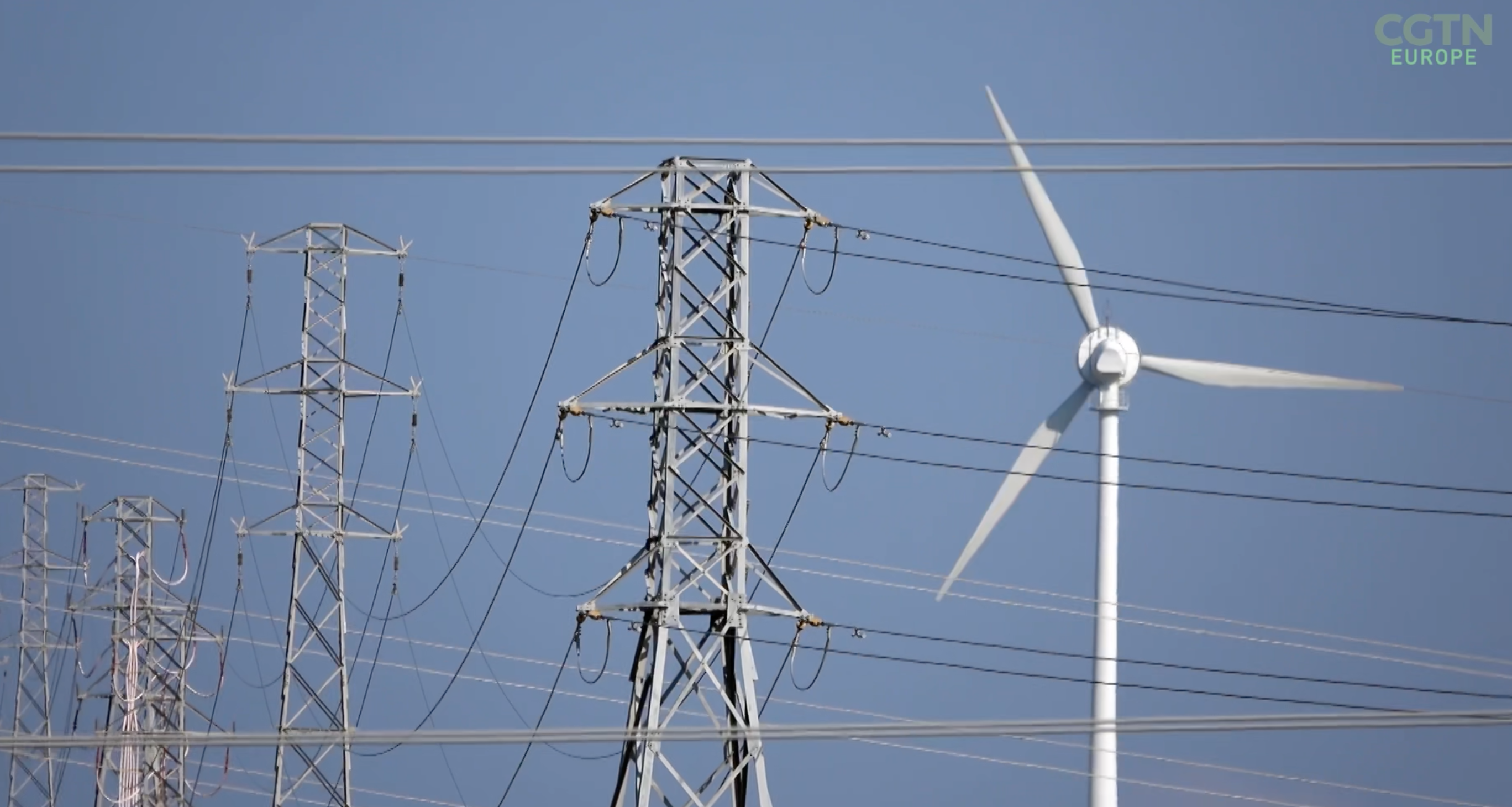
Wind turbines generate electricity along Greece's coast. /CGTN Europe
Wind turbines generate electricity along Greece's coast. /CGTN Europe
Belgium's mini-forests
By Toni Waterman in Brussels, Belgium
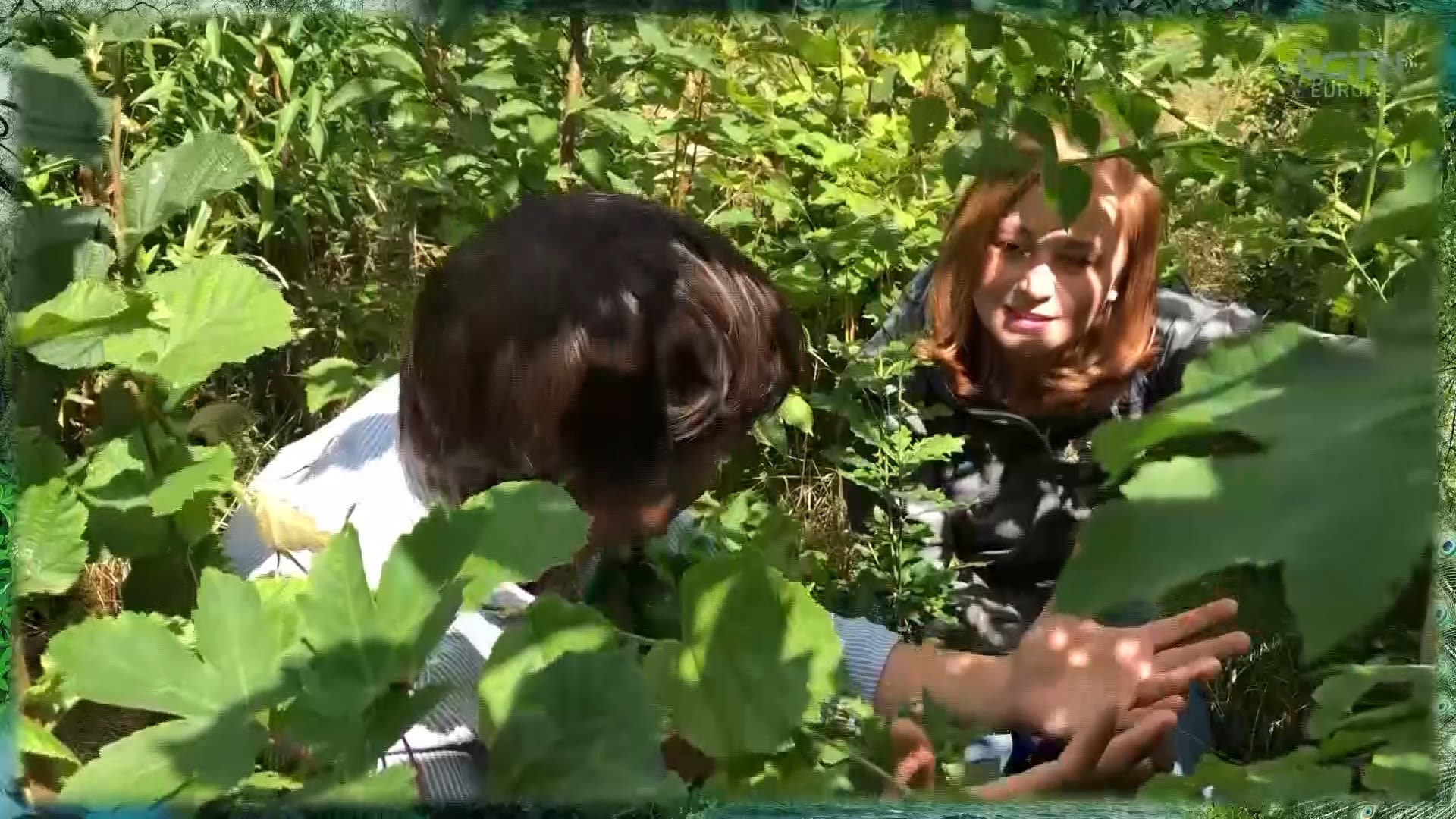
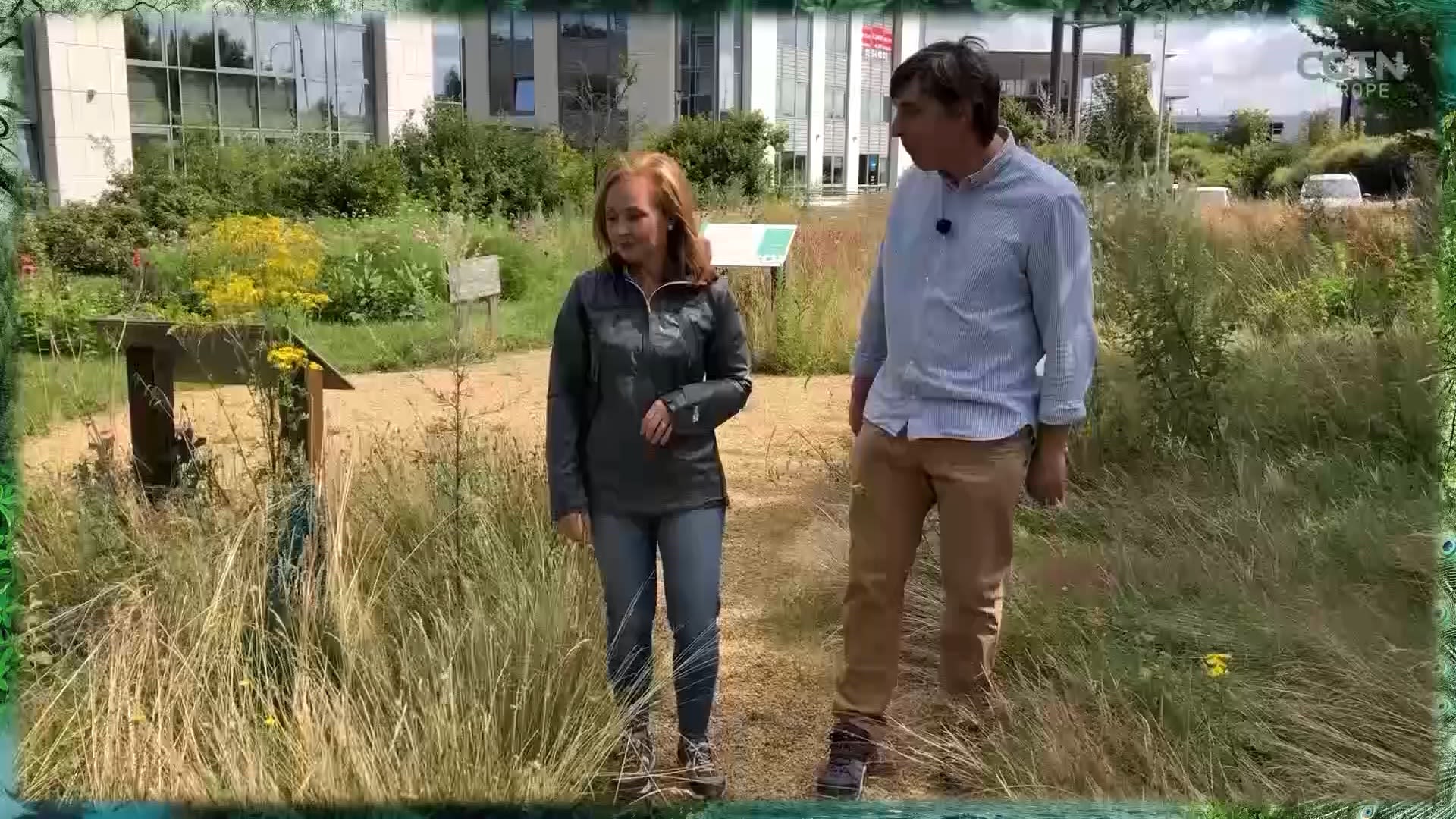
De Brabandere takes CGTN's Toni Waterman to the forest. /CGTN
De Brabandere takes CGTN's Toni Waterman to the forest. /CGTN
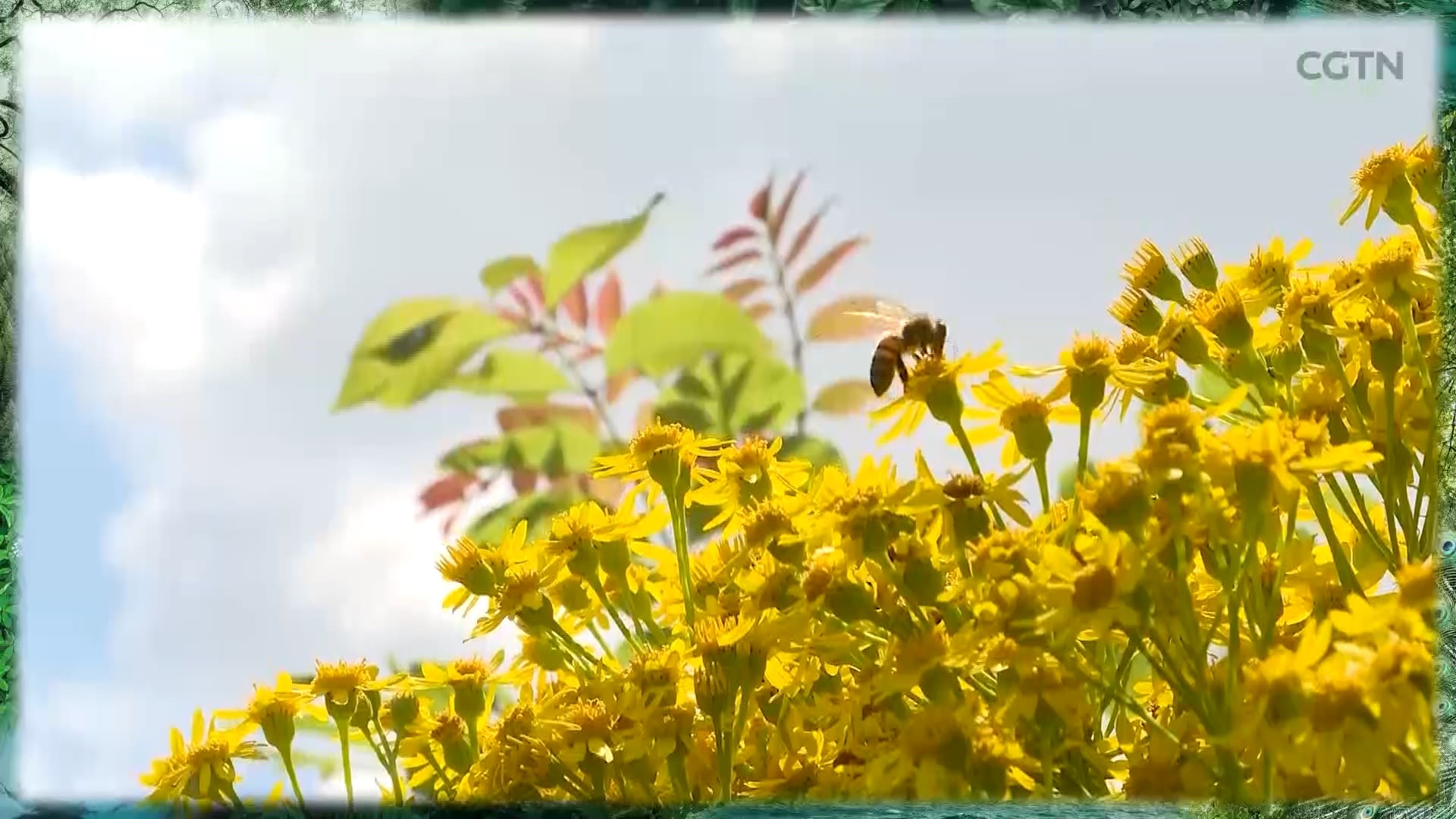
The mini-forests promote biodiversity. /CGTN
The mini-forests promote biodiversity. /CGTN
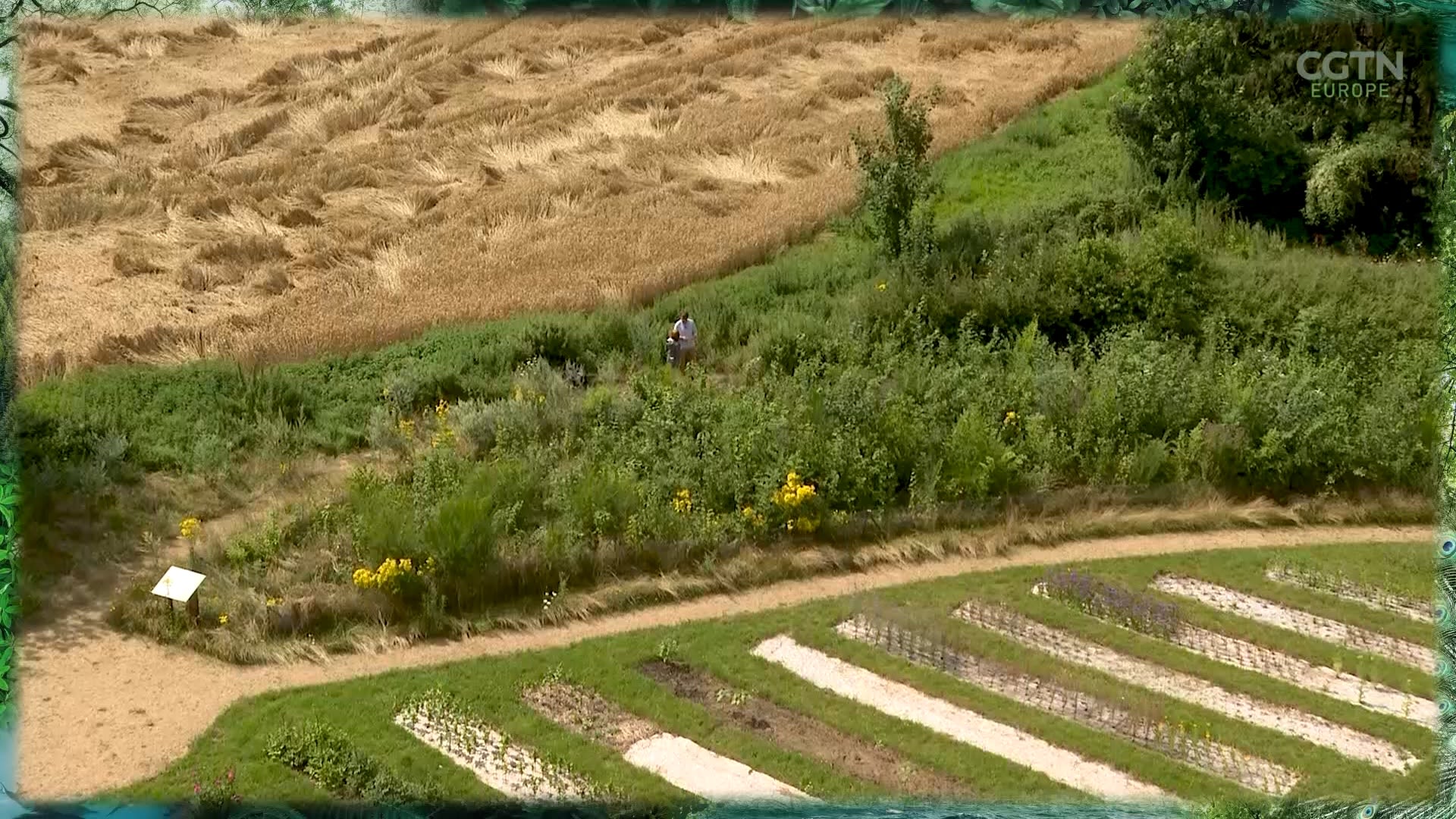
The mini-forests can be carved from any slice of land. /CGTN
The mini-forests can be carved from any slice of land. /CGTN
Along the outer rim of an office park outside Brussels, a mini-forest is growing – fast.
"When we planted it a year and a half ago, it was only knee-high," says biologist Nicolas de Brabandere as he shows CGTN around.
Now the trees tower overhead, growing at an impressive rate of a meter every year. Enter inside and the smell of soil and the buzzing bees flood the senses as the highway nearby fades into silence.
"The natural dynamic of the forest is to turn from a low to a lush forest – that's a process that takes about 200 years," explains De Brabandere. "With this methodology, we plant everything at once and we speed up the process, and in 20 years we'll get two very similar results.
Fast forests
The idea of growing a centuries old forest at warp speed was the life's work of the famous Japanese botanist Akira Miyawaki, from whom these mini-forests get their name. The forests pack a powerful ecological punch – 30 times denser than a natural forest, they can store 40 times more carbon and contain up to 20 times more biodiversity.
De Brabandere, himself a biologist, has adapted the Miyawaki method to Belgium's unique climate and terrain, with 26 different species planted in this 300 square meter patch alone. The cramped living quarters become the genesis of that rapid growth as each tree fights to reach the sunlight first.
"We talk a lot about biodiversity, but we don't know what to do," says De Brabandere. "This is an example of what we can do – actually to create an ecosystem, very diverse."
Thriving diversity
Besides offering shelter, these mini-forests also provide cool shade and filter harmful pollutants out of the air. De Brabandere has so far installed 30 Miyawaki forests in Belgium – at businesses, schools, even private residences.
"We're really creating a habitat for biodiversity," says De Brabandere. "We hear birds chirping in the background, you have mushrooms growing in the forest, and lots of insects."
He says these urban forests alone won't solve the problem of biodiversity loss or climate change. Rather, he hopes they will serve as models of inspiration.
"The idea of these forests is really to create an emotion to touch their hearts. It's a tree to trigger a change inside everyone."
It's a mini-forest with big dreams.
France's changing diet
By Ross Cullen in Saint-Marcel Les Felines, France
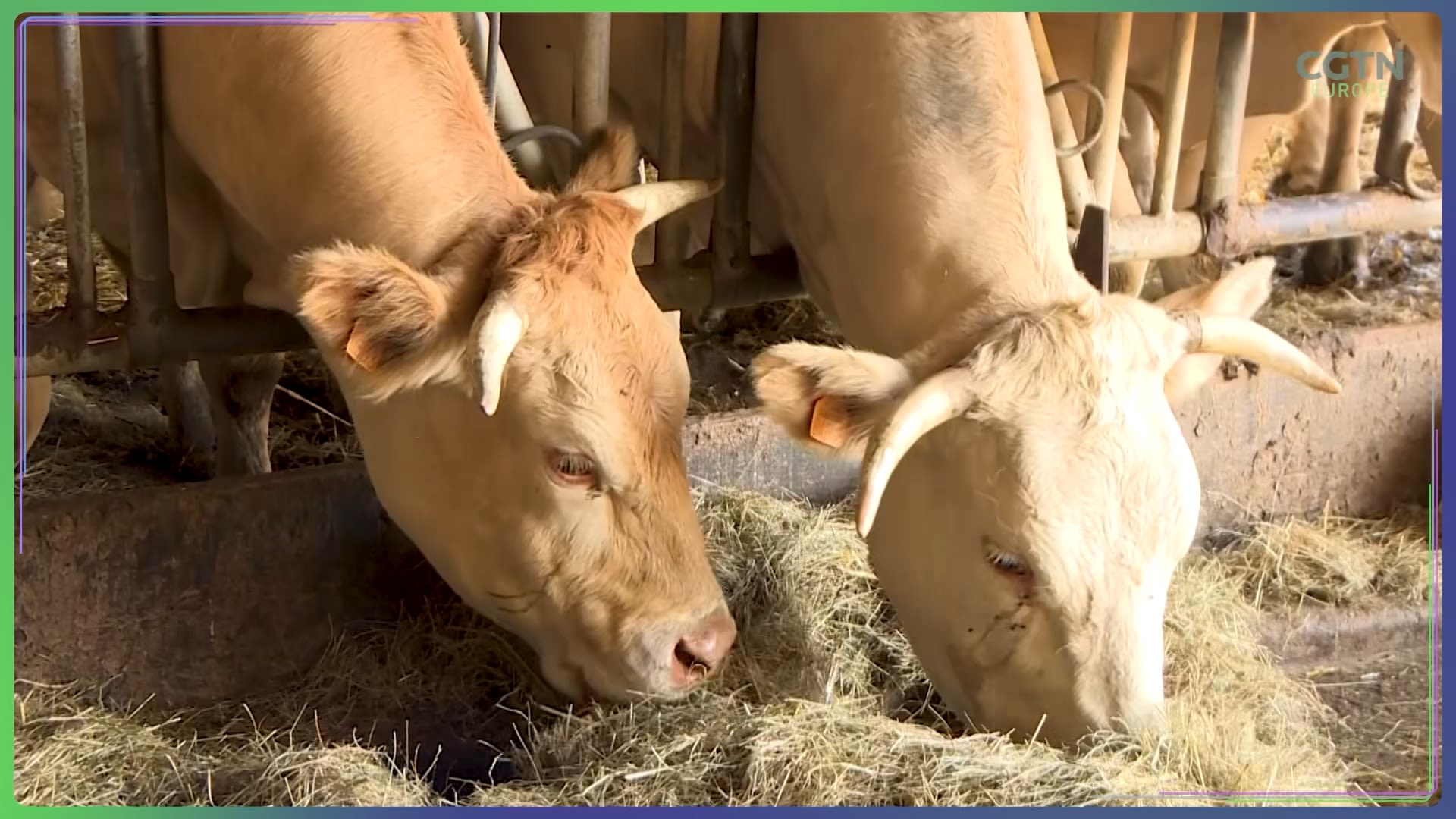
Here in the rolling green countryside of the Upper Loire valley, Floreal Fernandez runs a cattle farm. He has three bulls and a whole herd of females and calves.
It's a traditional farm in the country with the greatest agricultural area of any European Union nation. But traditions are starting to shift.
"I think everyone is free to eat what they choose," says Fernandez. "They are some people who love meat. Then there are others who say you must not eat it. If you teach children that it is better not to eat meat, well then they will normally listen to their parents."
Vegetarianism is well-established and vegans no longer represent an insignificant number of consumers. But farmer Fernandez says you have to look into what people really mean when they talk about ecology.
"If you make a soya-based steak, here in France we produce very little soya so it has to come from Brazil or the United States," he says. "So if you're going to link vegans to the environment, well there you have it… Meat is right here. Fed, cared for, raised in the best possible conditions, and nearby as well."
Perhaps surprisingly, agriculture contributes only around 1 percent to the EU's gross domestic product, yet the bloc's Common Agricultural Policy is the single largest component of EU spending.
That policy is being reformed from 2023, with a greater focus on the environment and sustainable agriculture. The EU will want to ensure that reforms are not just spoken about in Brussels, but are enacted at a local level.
France is the biggest agricultural producer in the EU. It also wants to be a leader in green politics. The challenge is how to manage that transition for traditional industries.
Global fast-food giants are part of the culinary fabric of France, but places like Burger King are recognizing changing taste trends – they're rolling out U.S. firm Impossible Meat's vegan nuggets, while McDonald's has entered a partnership with another plant-based producer, Beyond Meat.
Meet the New Farmers
There are companies in France trying just the same thing. Les Nouveaux Fermiers, or the New Farmers, want people to switch from a meat-based diet to a plant-based diet.
"The thing is that there are many people who are being a bit reluctant because of French history, tradition and cuisine," says Les Nouveaux Fermiers co-founder Guillaume Dubois.
"But then they try it out and they see that it just tastes very good. It's good for your health, it's good for the environment, and we see more and more people switching their diet to vegetables."
In France, 30 percent of the population lives in rural areas, and the country receives more EU agricultural payments than any other member state.
But green choices are growing in the cities and may force change for the farmers in the fields.
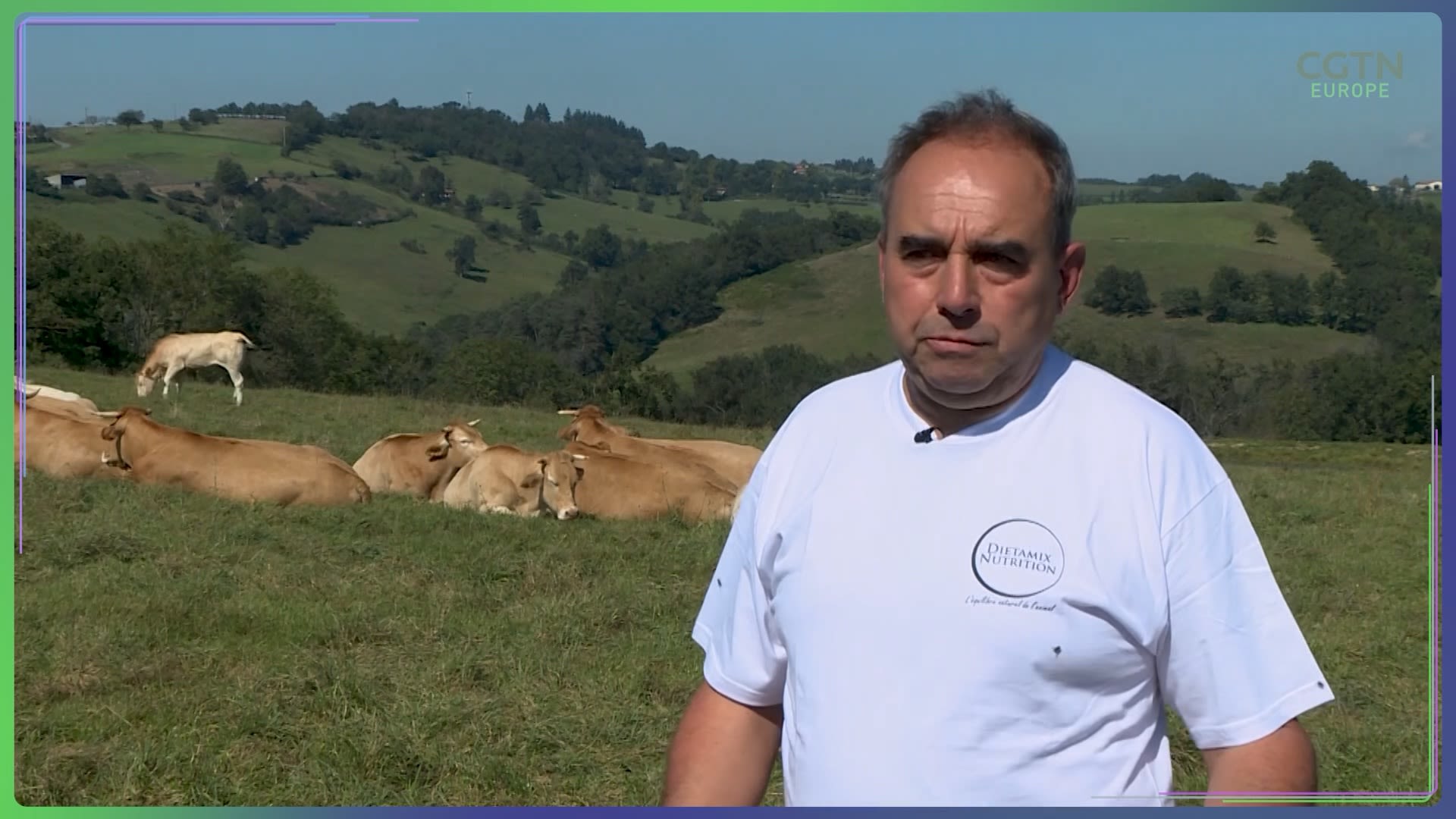
Cattle farmer Floreal Fernandez fears the eco-cost of shipping soya. /CGTN
Cattle farmer Floreal Fernandez fears the eco-cost of shipping soya. /CGTN
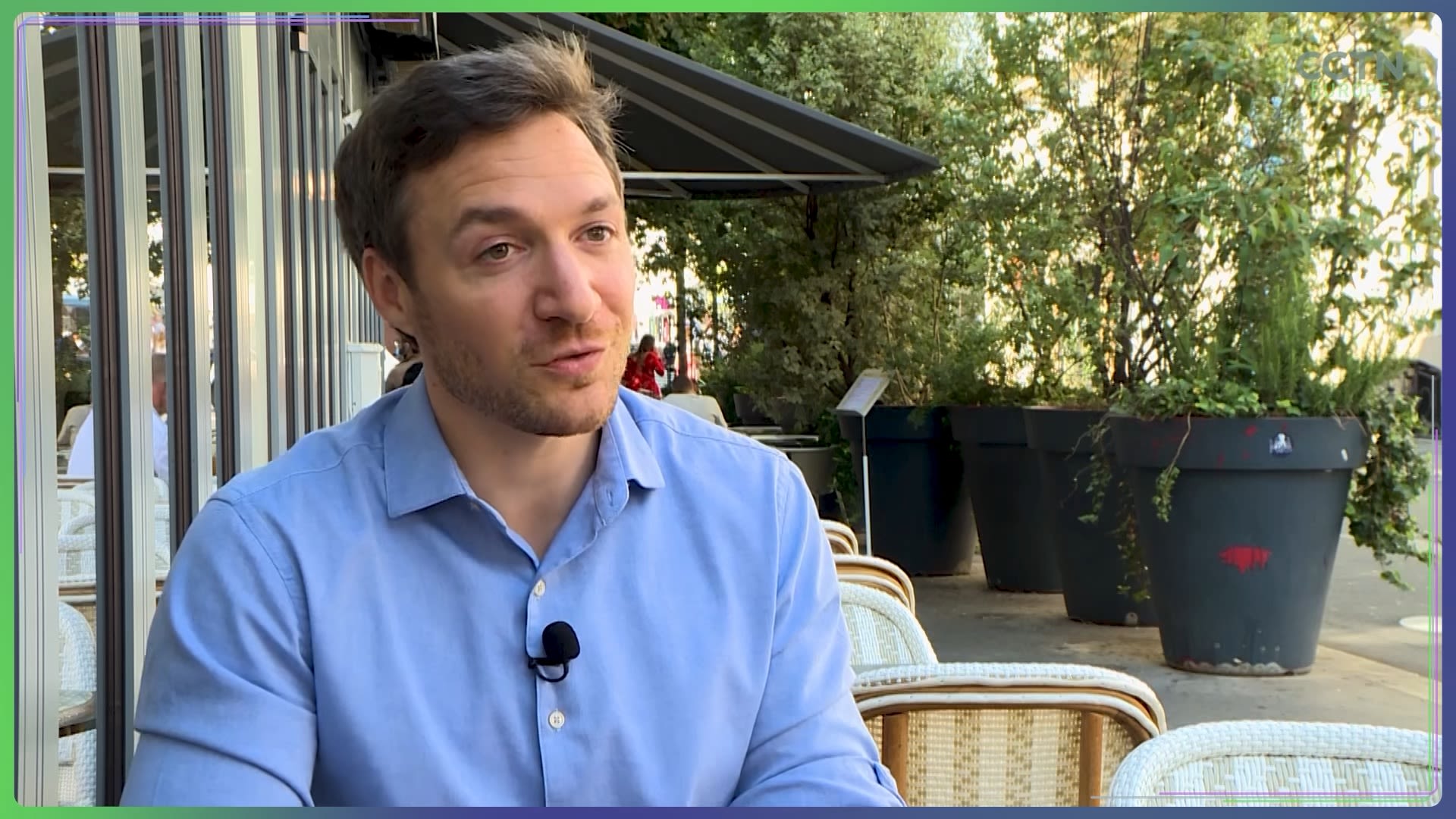
Guillaume Dubois sees a new way to feed France. /CGTN
Guillaume Dubois sees a new way to feed France. /CGTN
Germany's sponge city
By Natalie Carney in Leichlingen, Germany
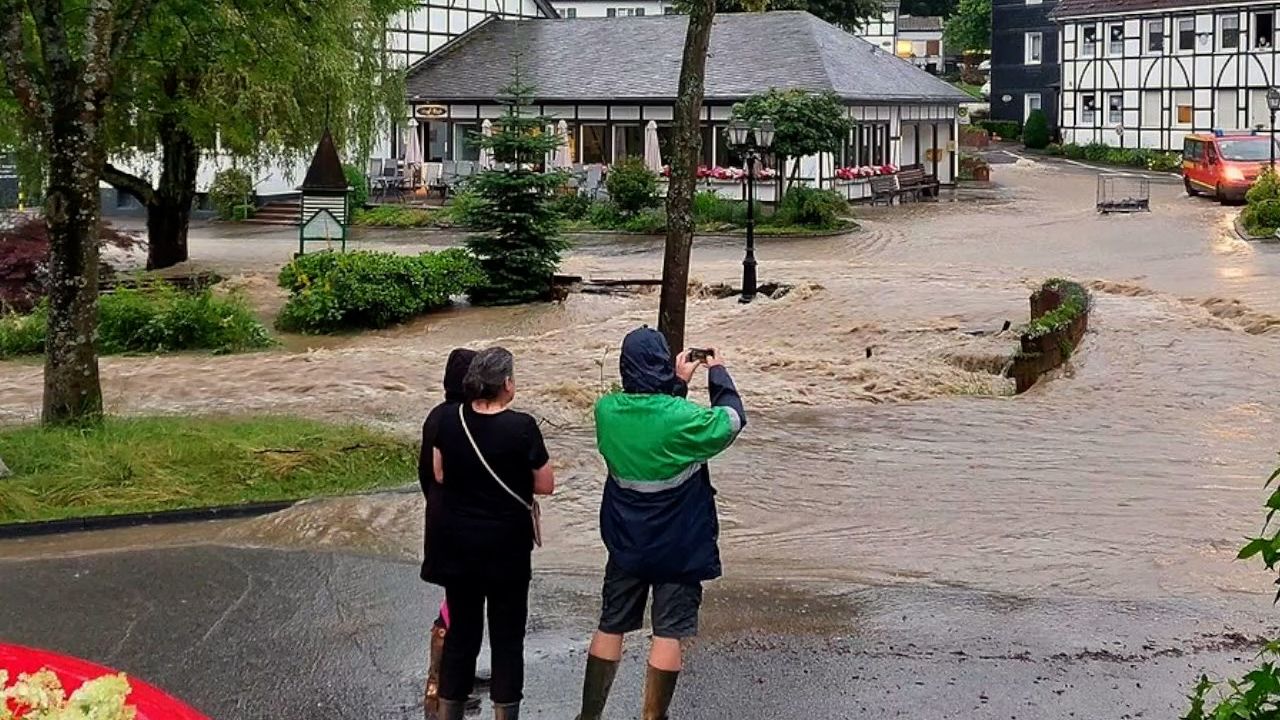
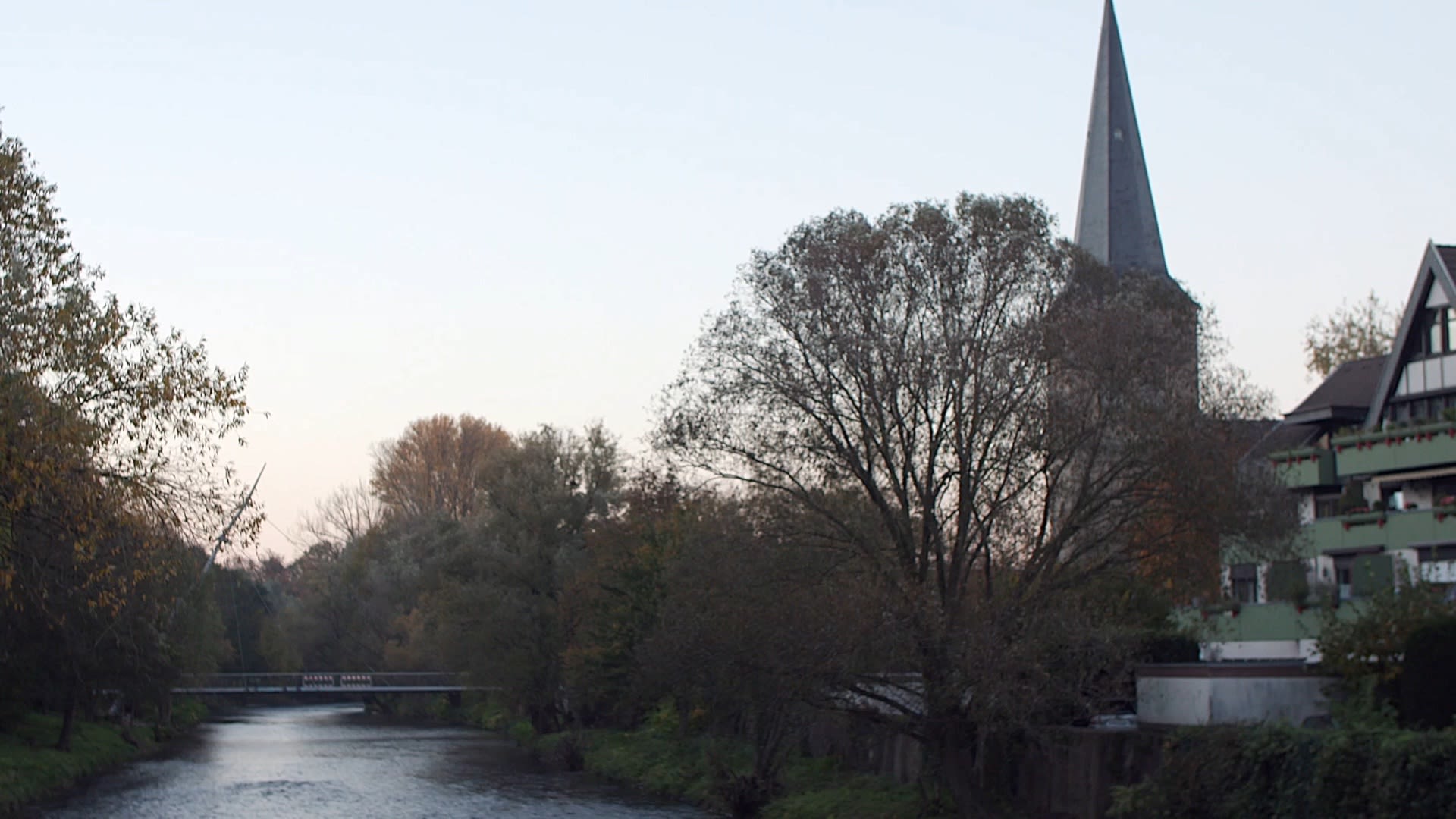
Leichlingen has a plan to avoid both flooding and drought. /CGTN
Leichlingen has a plan to avoid both flooding and drought. /CGTN
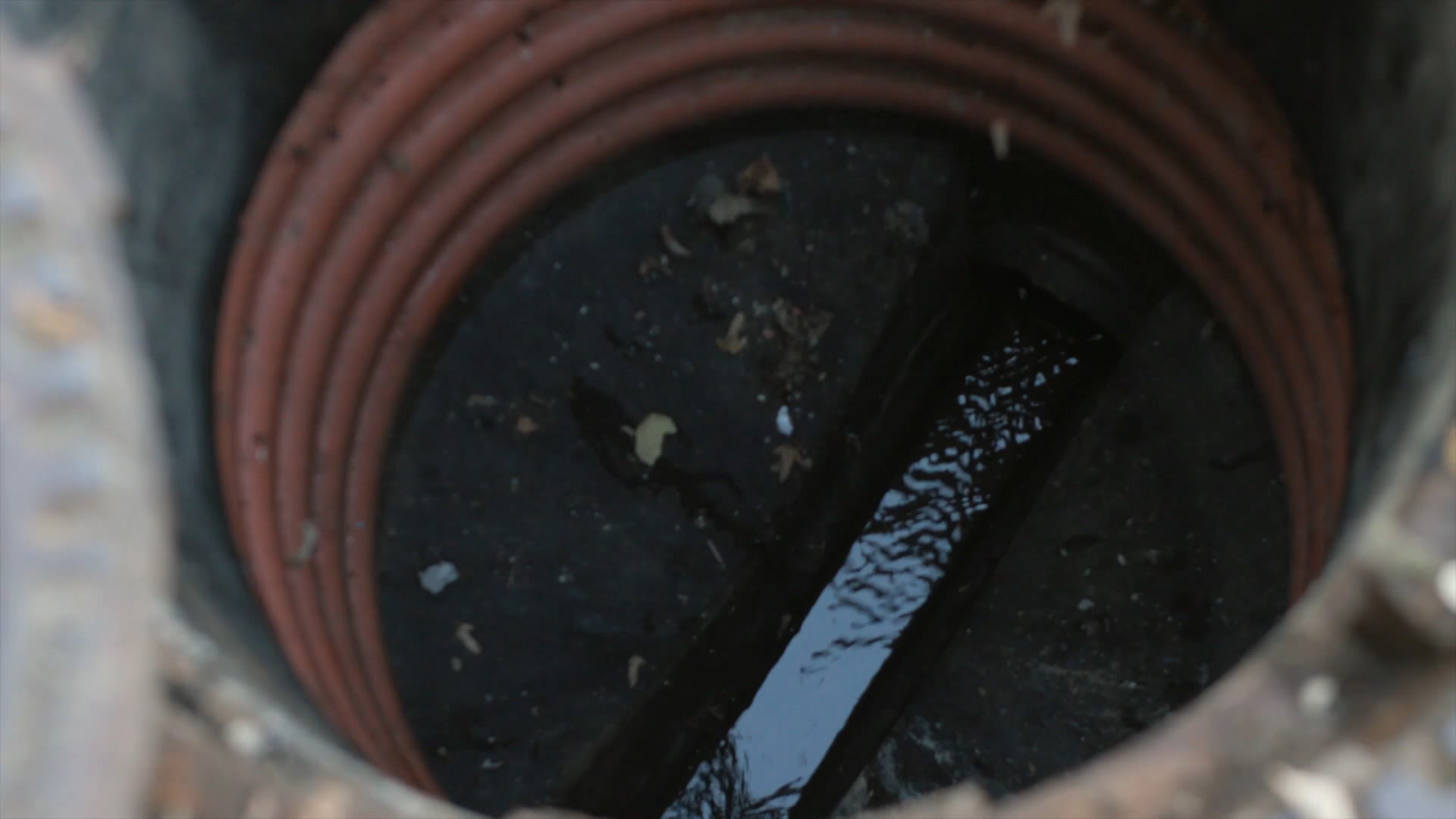
The old-fashioned sewer system needs a serious overhaul. /CGTN
The old-fashioned sewer system needs a serious overhaul. /CGTN
As countries and cities look at ways to protect themselves from climate changes' growing threats, one small community in western Germany is putting plans into action and transforming into one of the country's first "sponge cities."
As the name suggests, the sponge city concept uses urban planning ideas to strengthen ecological infrastructure and drainage systems, to better protect the space against flooding and make better use of water resources.
While China developed some of the world's first sponge landscapes, the idea is being implemented into urban design plans in some of the world's most flood-prone areas, such as those parts of western Germany which experienced devastating floods over the summer.
Frank Steffes is the mayor of Leichlingen, some 30 kilometers north of Cologne, and says that heavy rains and flooding in 2018 and this past July pushed them into action.
"We want to position ourselves better for the future, which means first and foremost that we get the water out of the city safely during such events," he tells CGTN. "But on the other hand, droughts will probably become more frequent, so that's why we want to keep water in the city."
The federal government agreed and has given the town a grant to help fund the $1 million project.
"Currently, the water goes into the sewers and out of the city centre to the sewage treatment plant 10 kilometers away. This is a waste of the natural resource," says Tycho Kopperschmidt, the town's civil engineer put in charge of implementing more modern urban design to meet current needs.
"We want to keep that water here by creating an open-earth trough system, where the rainwater from the roofs flows in and is then retained here in the cistern, or is subsequently infiltrated so that the water soaks the ground in summer."
Into action
To date, plans are to plant cisterns up to 50 meters long and three meters in diameter underneath the city's main park, and to build these open-air water channels through residential areas to nourish local vegetation and beautify the area.
It's hoped that all will be completed by 2024.
When heavy rains arrive, the cisterns will collect and save the water for future use. Once full, the water will be directed to secondary underground containers that will control the seeping and drainage of water into the earth. Any additional water will be directed straight into the town's Wupper river.
"It can make an important contribution to the targeted management of heavy rainfall and to relieving the burden on the sewage system," says Kopperschmidt. "We also have dry phases, so we really want to keep the water underground so that we have green trees again in summer, green areas that produce evaporative cooling and healthy trees with shade."
Similar projects have been underway across China, Denmark and the Netherlands over the past decade, but other countries such as India, the U.S. and Russia are observing their success and working on the implementation of sponge cities in their own flood-prone areas.
As for Leichlingen's 28,000 residents, Mayor Steffes says "the whole project is really being received very positively – people are looking forward to it. It will also be a very pleasant visual experience."
And there are hopes it could even raise property prices.
Fighting desertification in Spain
By Rahul Pathak in Andalucia, Spain

It's one of the driest areas in Europe and it's getting even drier.
Andalucia in Spain's southeast has never been blessed with frequent rainfall, so when you add a highly industrialised agriculture sector with its heavy use of natural resources the rapid desertification of the land is the result.
"The southeast of Spain has always been the most arid area of Europe, and with climate change the difference with other areas is even bigger," says Miguel Angel Gomez. "So we try with different methods to save and use any rain we get in the most efficient way."
CGTN first met Angel Gomez two years ago. His work for eco-business association Alvelal has centered on a process known as regenerative agriculture, using older, less intensive farming methods, allowing the land to rehabilitate.
Advancing desertification
Murcia, in the south of Spain, is the frontline in the battle against rapid desertification; climate change experts say that if desertification is allowed to continue unchecked its arid landscape is what 70 percent of Spain will look like by the end of the century.
Spain is one of the world's worst affected countries, with a fifth of its land already suffering desertification.
But it's a problem faced by regions and countries all over the world including Italy, Greece, North Africa, the U.S. and the Middle East.
For Angel Gomez, the globalization of agriculture has been a major factor. His solution: think smaller.
"We need to look at agriculture in a very local way," he says. "We need to use crops that are appropriate for a specific area. They need to be able to adapt to the climate in their region, to the soil, the atmosphere and the methods of farming in that area."
Finding local solutions to this global issue is one way to help reduce the impact that climate change has here in one of the driest regions in Europe.
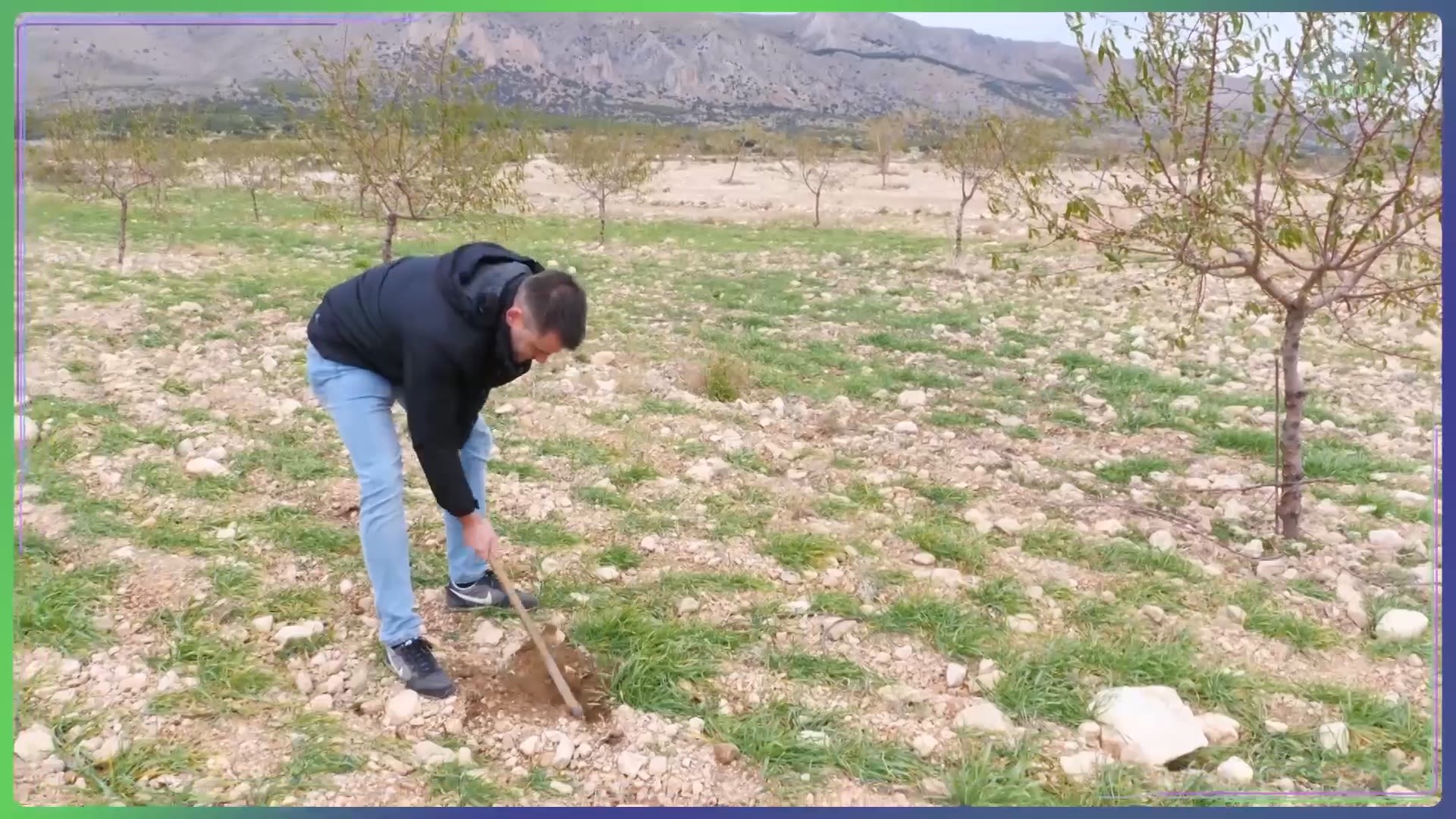
Fighting desertification is a hard row to hoe. /CGTN
Fighting desertification is a hard row to hoe. /CGTN
Regenerative farming
By Juliet Mann in Buckinghamshire, UK
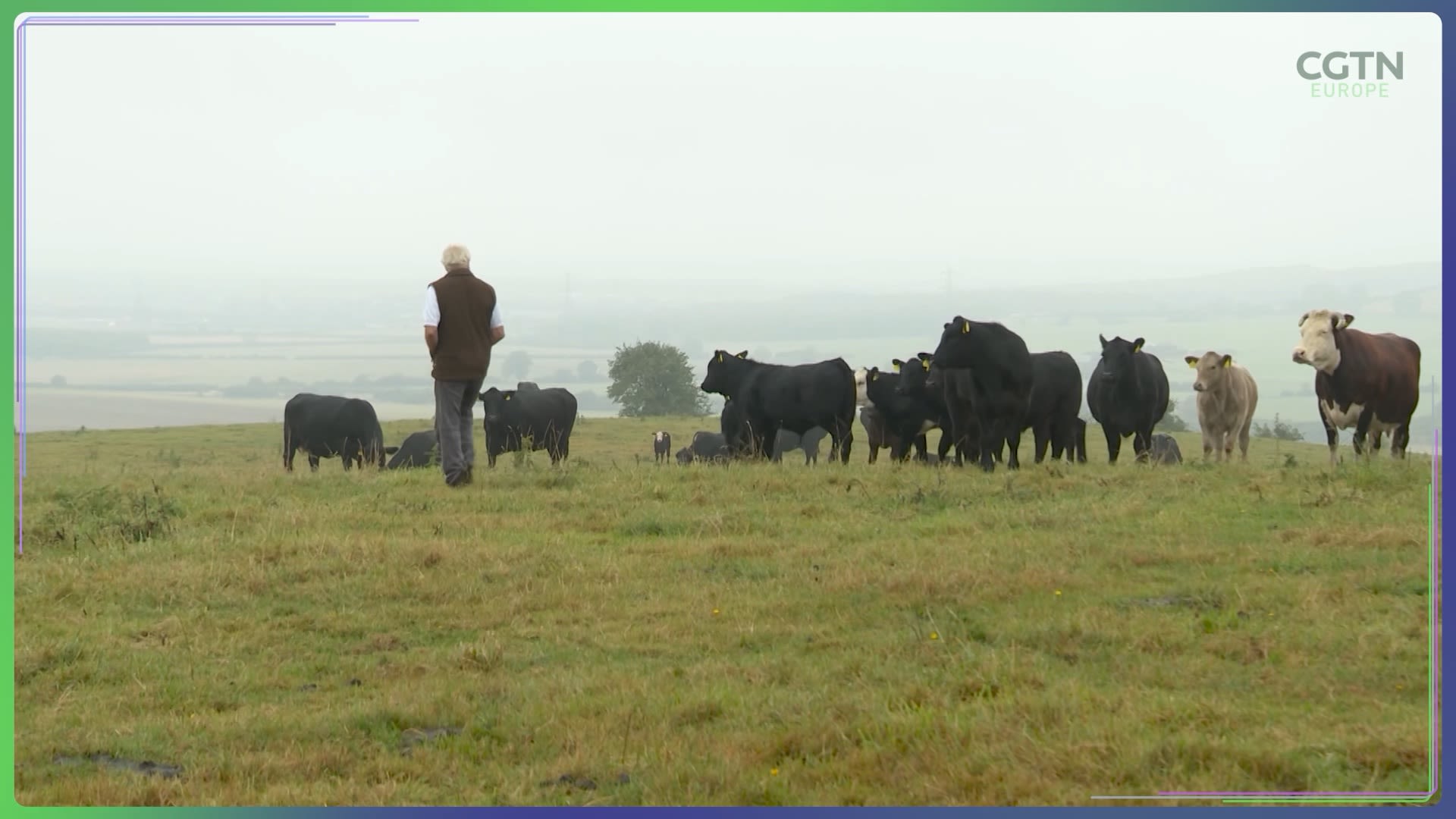
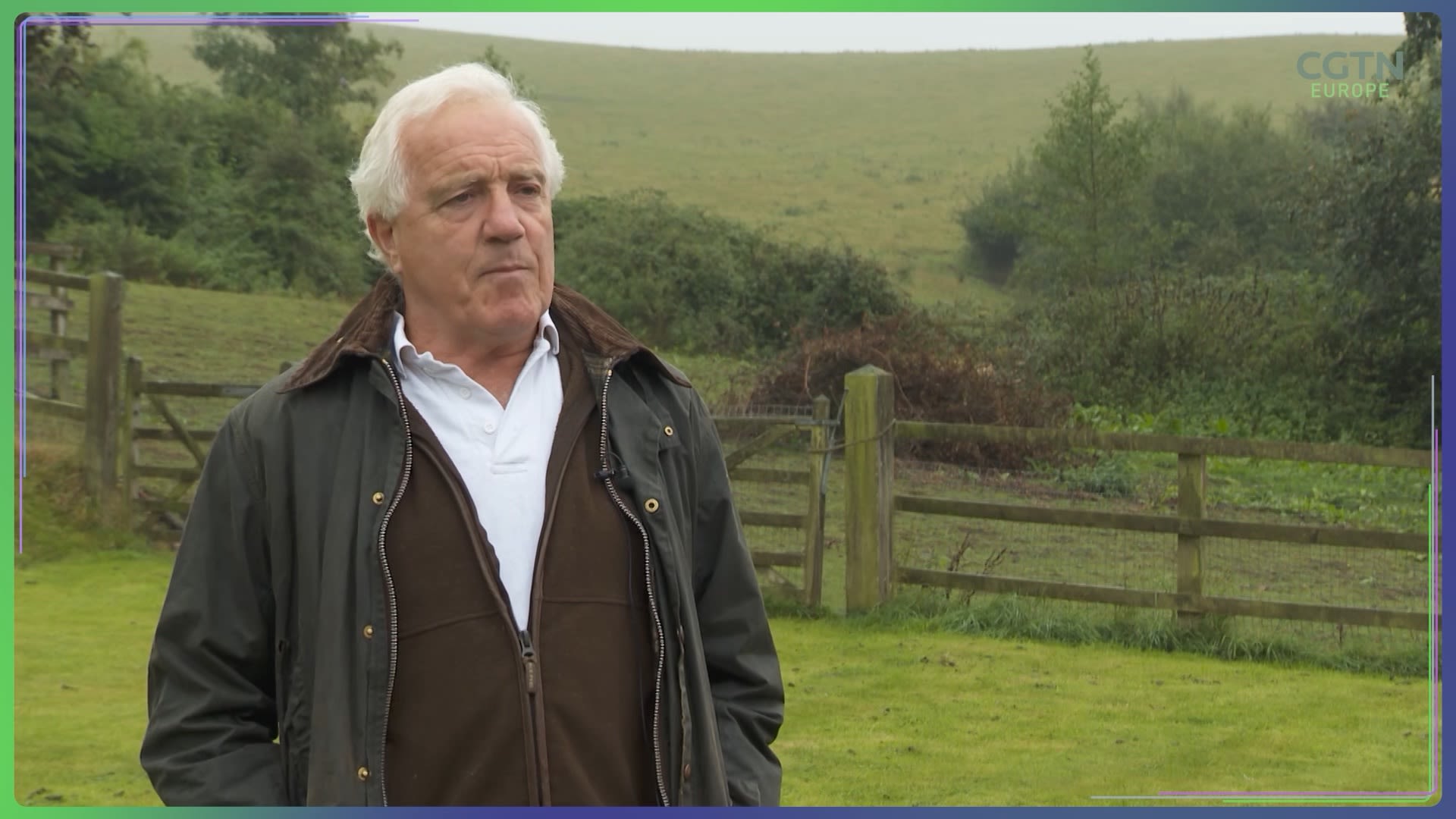
Farmer Tom Morrison has returned to a more natural way of keeping livestock. /CGTN
Farmer Tom Morrison has returned to a more natural way of keeping livestock. /CGTN
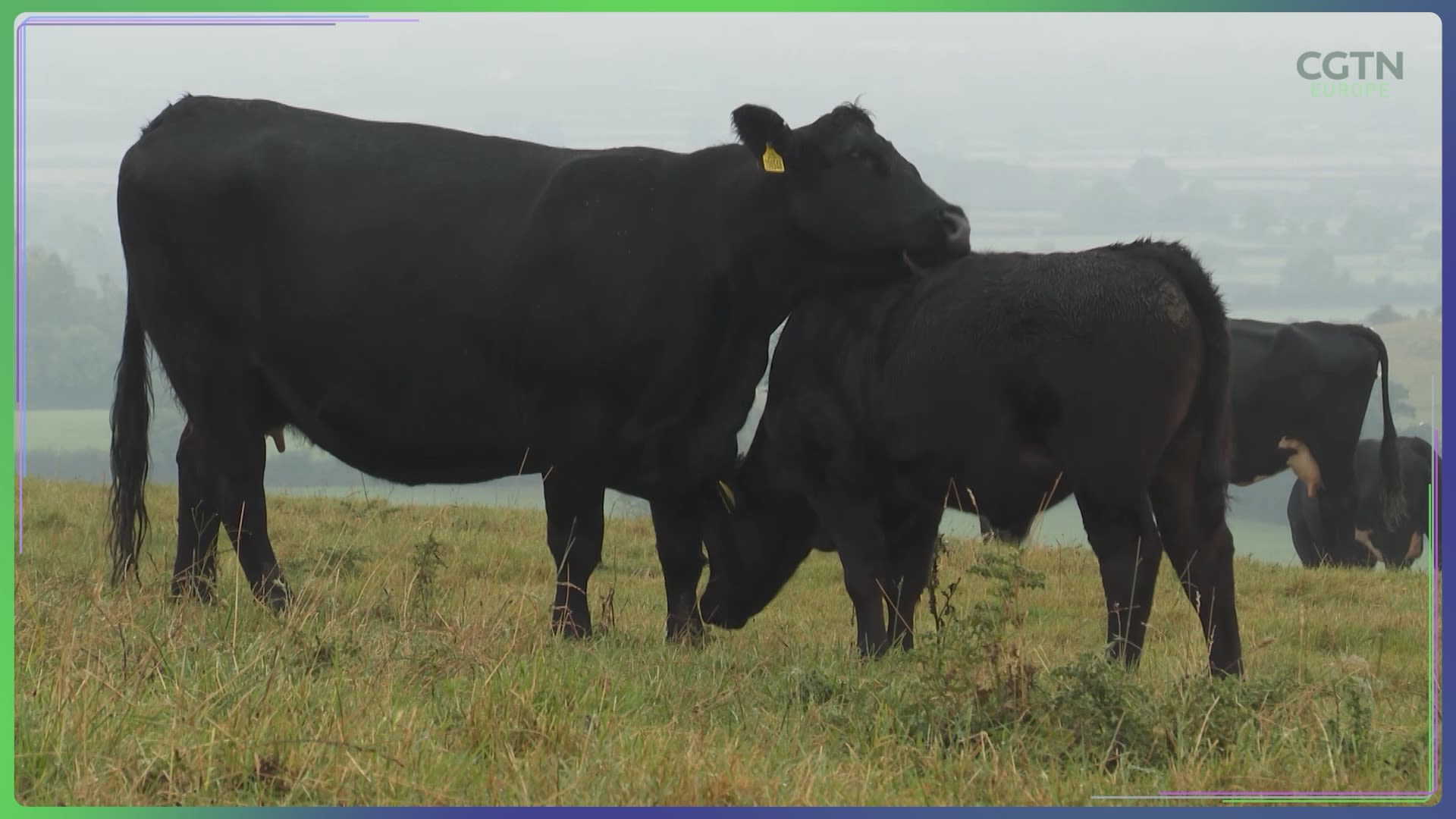
'They live longer, they're more fertile, our vet bills are a third of the average.' /CGTN
'They live longer, they're more fertile, our vet bills are a third of the average.' /CGTN
In England's north Buckinghamshire, on an 168-acre all-grass farm, two herds of cows roam freely.
"The way I farm is actually the future," says farmer Tom Morrison.
"We have Aberdeen Angus cattle and it is really, really simple. We have a bull and 25 cows, and every year the cows have a calf. They grow for two and a half years, then they go to the butcher and they're sold.
"I almost look at my cattle as my partners in managing the land. It's an easy way to farm because we let nature take the load. We intervene only when we're really, really sure of what we have to do."
Food and farming is a key UK sector with a large carbon footprint, accounting for one-fifth of UK carbon emissions. But a shift to more holistic farming methods could mitigate the impact of the climate crisis.
A night-time epiphany
Farmer Tom's epiphany came one winter's night.
"It was three o'clock in the morning. It was six degrees below zero. And I had my hand up a cow's bottom and I had a silk dressing gown on and a pair of welly boots. And I said, 'Is this really farming? Am I doing any good? Is this what nature intended?' The cow would have said, 'Certainly not'..."
So he stepped back and stripped back, using the principles of regenerative farming – essentially letting nature do what nature does: ditching big machinery and phasing out pesticides, which means more carbon gets stored in the soil and improves the environment.
"We're not a huge farm," Morrison admits. "But collectively, the members of the Pasture for Life Association, of which I'm a member, we do have tons and tons and tons to sell. There's a very good local market. People love our beef. And why should I get involved in a long food chain when it can be so simple?"
Brexit's opportunities and threats
Brexit, with the end of EU subsidies and rising costs of fertilizers, has given UK farmers more range to reconsider what they do.
Under old rules, farmers were given grants just for owning land. But now they'll have to earn it by delivering biodiversity. The UK government is paying farmers for specific tasks like sowing traditional seed varieties and taking care of hedgerows.
"Nature has sent certain signals that it's not right – floods, global warming and everything else. We know that something's wrong," says Morrison. "Now, this green and pleasant land is 70 percent pasture already. It's the biggest solar panel we have.
“Trees are not the answer because you can't fit trees into your arable rotation. You can't eat trees. Properly managed grass under ruminants, sheep or cattle, will store more carbon in the soil than trees can."
Big Business too is buying in. Among those promoting regenerative farming practises are McDonald's – for its beef suppliers in the UK, Pepsico, to scrap 3 million tonnes of greenhouse gases by the end of the decade. And Nestle, aiming to halve the carbon footprint of its fresh milk supply in the UK by 2025.
UK supermarkets like Waitrose and Morrison's are working with farmers on net-zero models. And Marks and Spencer is introducing 30 million bees to farms nationwide.
The goal is a more vibrant, bountiful, sustainable ecosystem that mitigates farming risk – and costs.
"For a start, I don't give them any concentrated feed," says Morrison. "They live longer. They're more fertile. We can prove on this farm that our veterinary bills are one third of the national average. So, your costs at every turn are going down and down and down and down with regenerative agriculture. Why? Because nature's taking the load."
This kind of farming works for local markets. But for regional markets and beyond, the supply chain is harder to unpick while still giving farmers a decent living – especially if new trade deals come with lower standards and prices, which UK farmers are forced to follow.
Policy is moo-ving, but the big shift will come when consumers habits and demands regenerate too.
Paris: A '15-minute city'?
By Ross Cullen in Paris, France
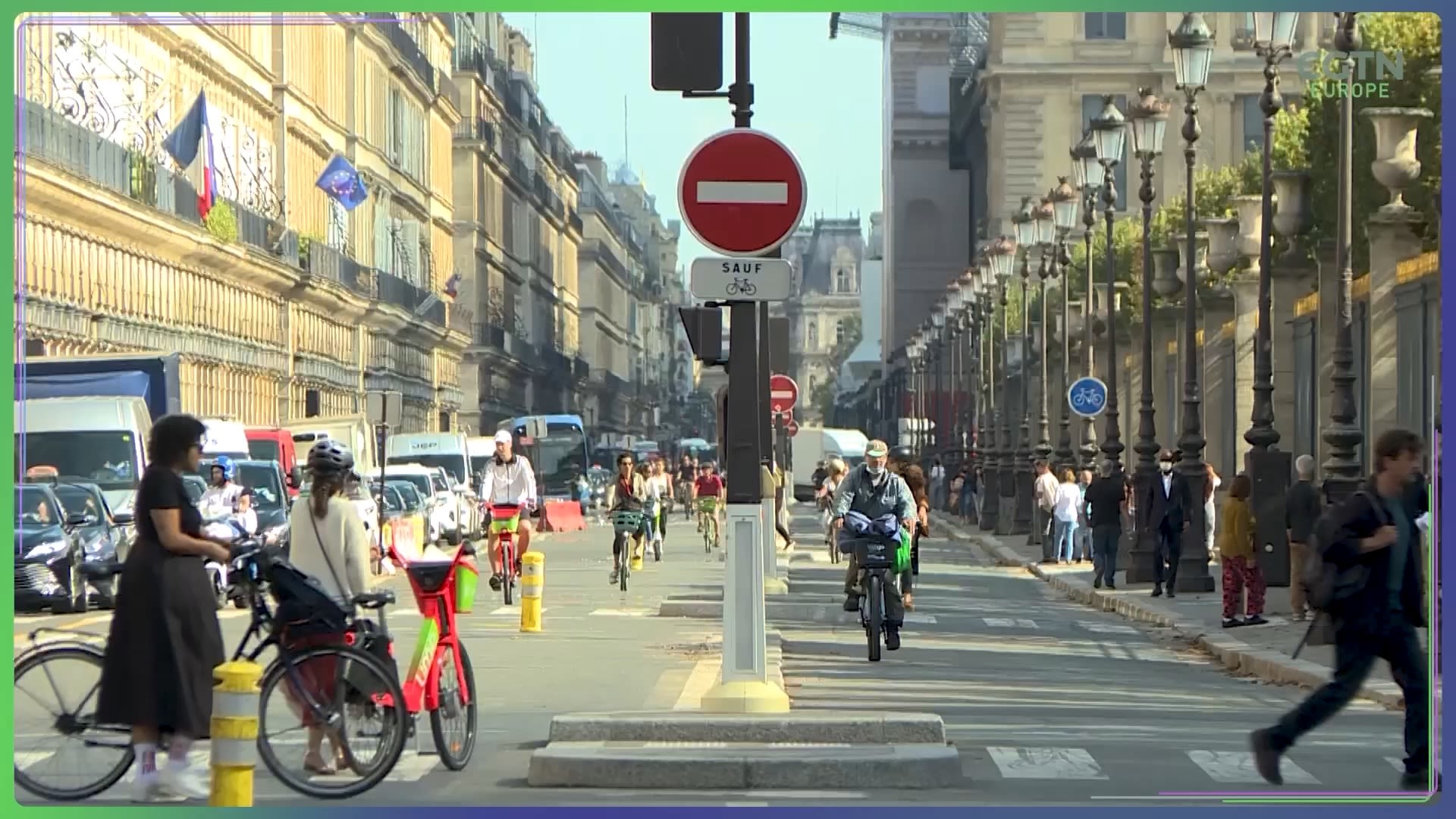
Paris mayor Anne Hidalgo says that she wants to make the French capital a so-called '15-minute city,' backing an idea conceived by a Colombian academic.
The theory is that most people's needs would be met within 15 minutes of where they lived in the city. But how would that work?
Under the 15-minute city concept, people's workplaces, their children's schools, sport centers where they exercise, cafes and restaurants where they meet their friends, and the stores they shop in, would all be within a 15-minute walk or short bike ride from their home.
Carlos Moreno is a professor at the Sorbonne University in Paris and he came up with the concept to change city life.
"With climate change and the pandemic crisis, we needed to implement another urban lifestyle for living in proximity, for using more and better resources, reducing our CO2 emissions, and to continue to develop economical and social activities in the different districts of cities," Moreno explains.
Urban travel is a central pillar of the plan. Paris is fast becoming a big biking city. Temporary cycle lanes were introduced last year at the height of the pandemic – and now those 60 kilometers of makeshift paths are being made permanent by the mayor of Paris.
Hidalgo has declared war on the pollution caused by motorists, cutting the number of car parking places, increasing electric vehicle charging points and dropping the speed limit in the French capital to just 30 kilometers per hour.
The mayor of Paris is an advocate of the 15-minute city idea. Hidalgo says she’s going to run for president next year, so Moreno's theory is likely to get more press and it will have to withstand more analysis and criticism about its viability.
Improving the urban landscape is also part of the plan. At the Place de la Bastille, in eastern Paris, trees have been planted and the canal-side area cleaned up.
The global 15-minute city
The 15-minute city plan could work well in rich countries, like France, but what about cities in emerging economies? Moreno says there is interest in Latin America and Asia in changing city life.
"In India it's very chaotic urban planning in different big cities, but those in charge are very interested in changing this model," he says. "In China, two weeks ago, I had the opportunity to deliver a talk for the principal urban planner for the big metropolises in China."
The effects of the climate emergency are being felt across the world, and Moreno says there must be rapid policy changes or the next 10 years could be 'catastrophic.'
"The question today is not to avoid climate change – this is not possible today." he says. "The key word today is mitigation. We need to reduce the impact of climate change."
The coronavirus pandemic, coupled with devastating climate events, has forced governments across the world to rethink their priorities.
Many including France, the UK and the U.S. promise to embrace green initiatives as part of building back better. A re-imagining of how our cities function is likely to form a key part of reshaping our futures.
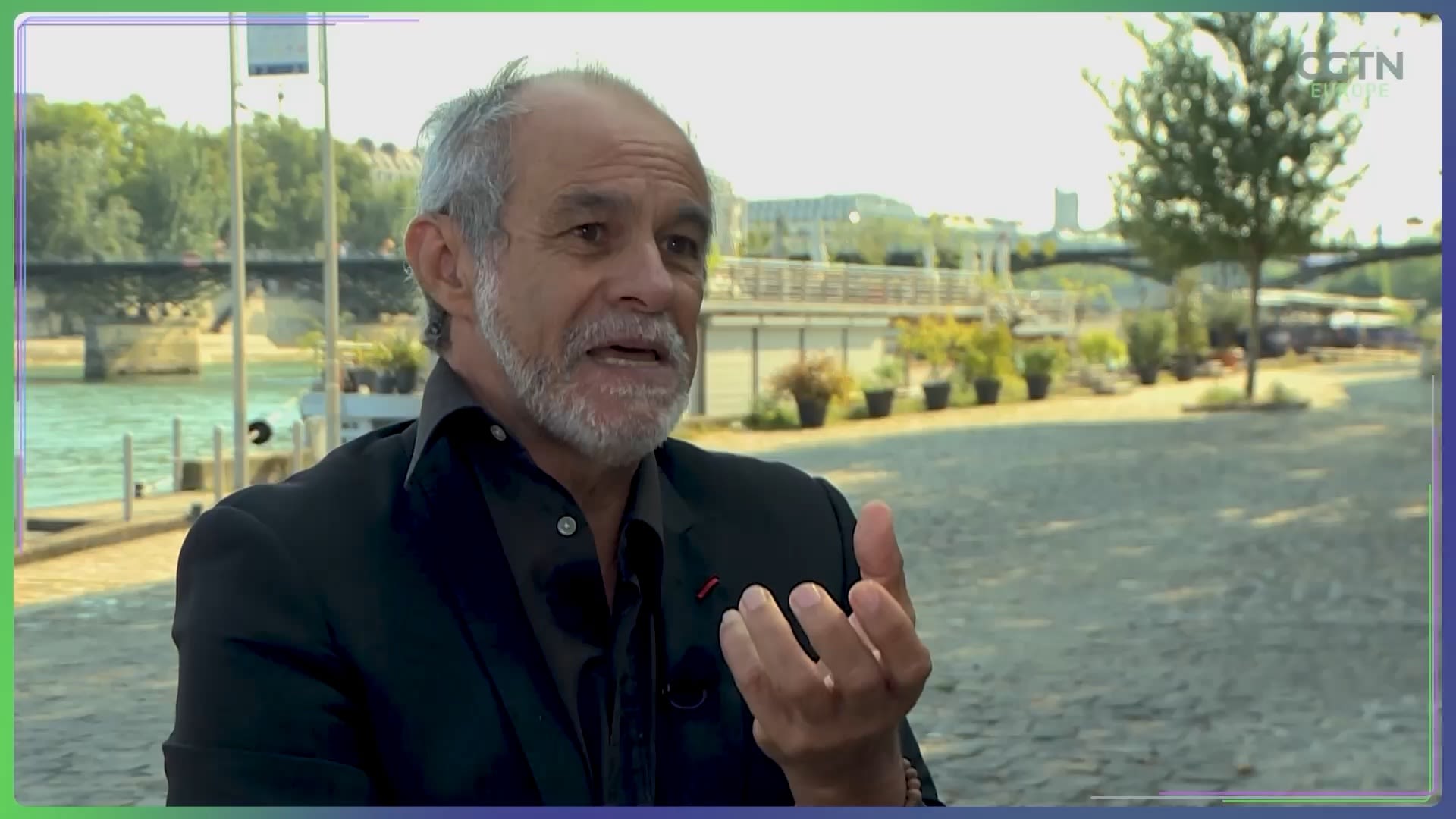
Sorbonne professor Carlos Moreno came up with the 15-minute city concept. /CGTN
Sorbonne professor Carlos Moreno came up with the 15-minute city concept. /CGTN
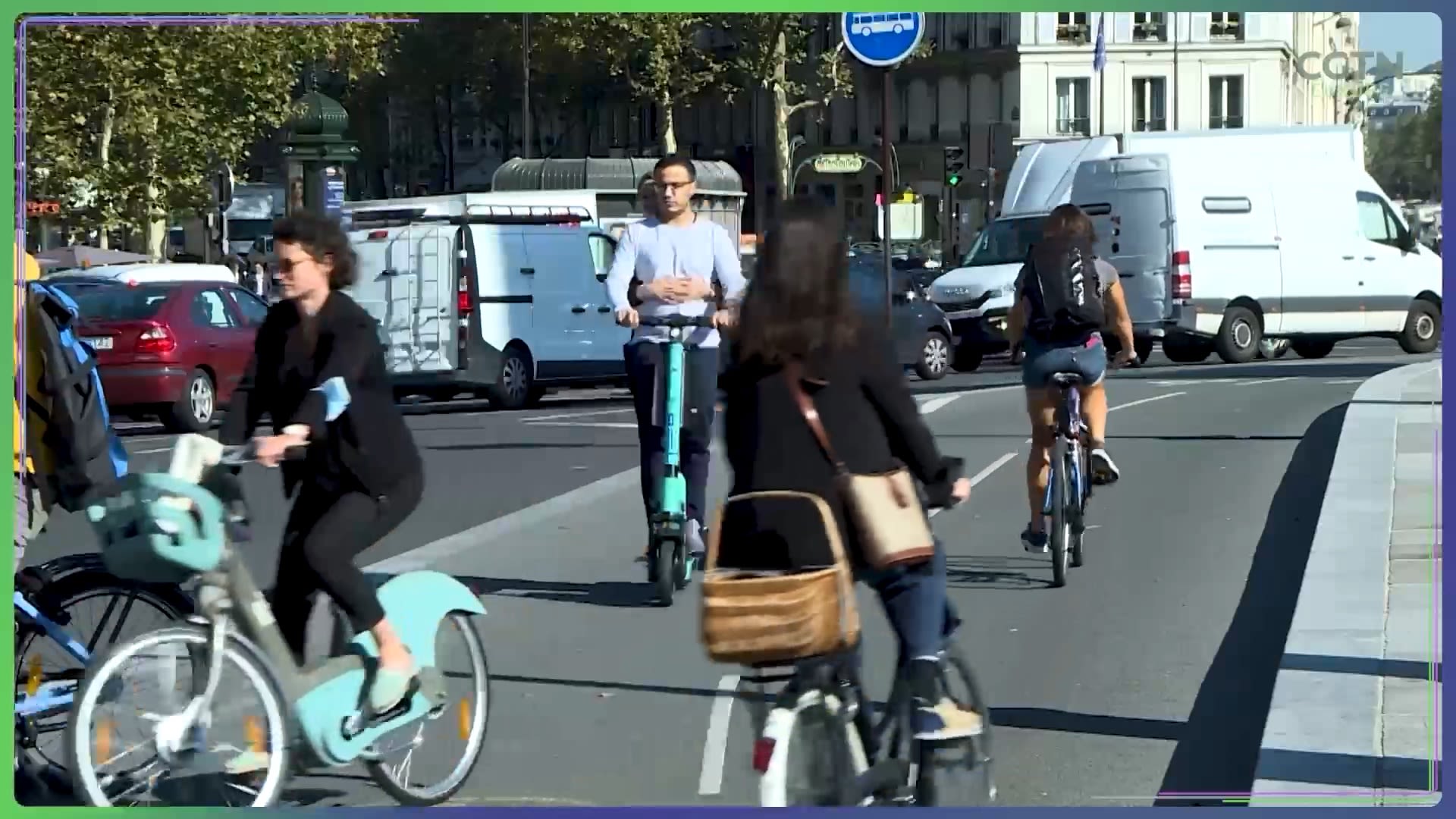
The 15-minute city deprioritizes motor vehicles. /CGTN
The 15-minute city deprioritizes motor vehicles. /CGTN